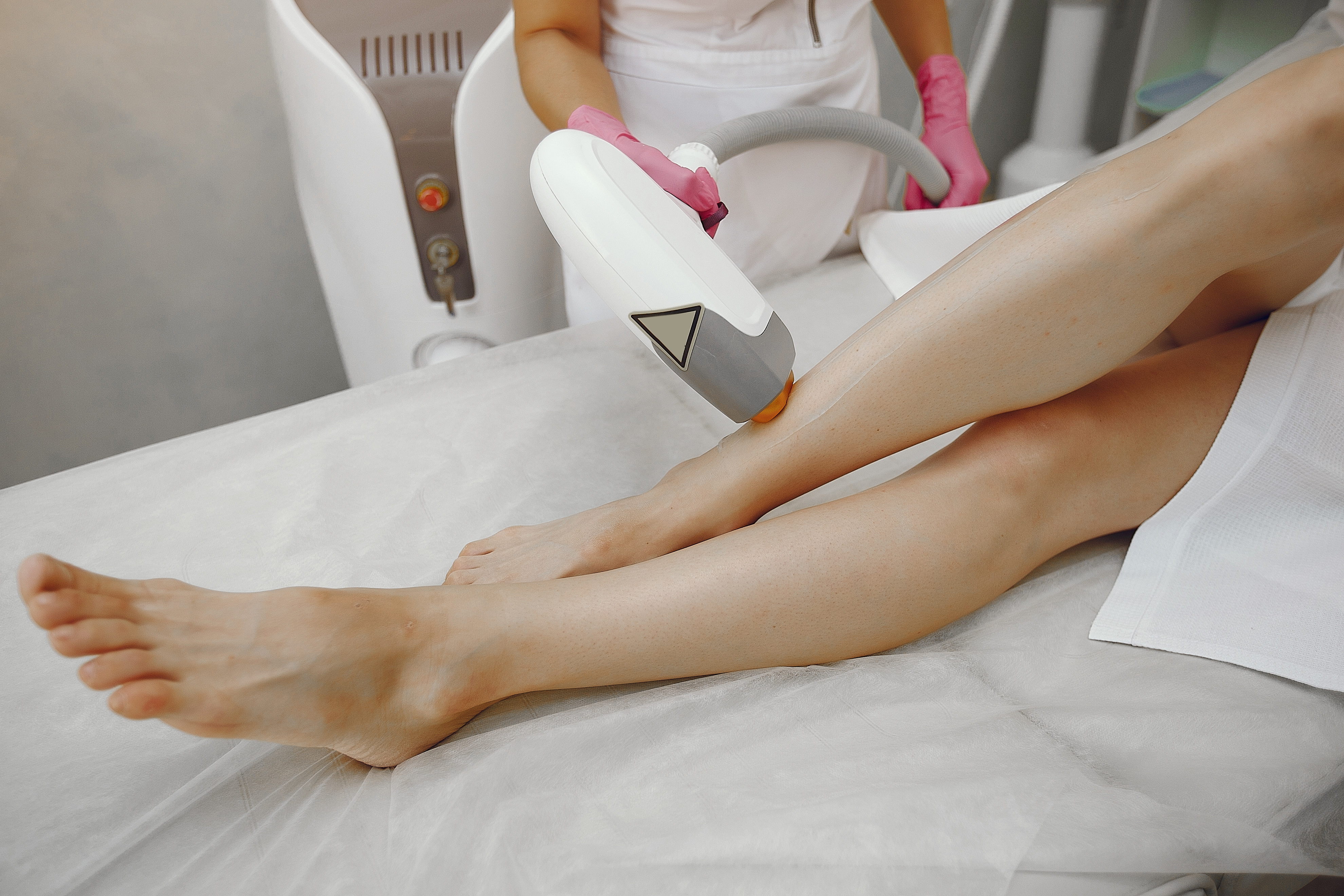
Are you fed up with trimming your pubic hair? While getting rid of pubic hair is not necessary, it is a personal choice that many of us make. You can select the one that is best for your body by figuring out which is the easiest and least painful method.
Regardless of sexual orientation, age, culture, or gender, a large number of people undertake this procedure. According to a recent poll, 80% of people groom their genital area.
It is entirely up to you to remove your pubic hair, but not all techniques offer the same benefits. Some procedures may put you at risk of harm or infection, while others offer better long-term benefits. Hence, read on to know how to permanently remove pubic hair as well as what to do before beginning the procedure.
Laser Hair Removal for Pubic Area
Over time, laser hair removal might result in a lasting decrease in pubic hair. Laser treatments vaporize hair and destroy hair follicles beneath the skin to limit hair growth by converting light energy to heat.
The doctor will apply an anesthetic to your pubic area. Then, they will place a laser on your skin and utilize it to destroy the hair inside the follicle. You might experience a little snapping sensation when the laser works, similar to a rubber string breaking on your skin.
This procedure assures typically hair-free skin for some time, but it may take over six treatments to achieve long-term benefits. When hair grows back, most people notice that they have reduced hair or it is light in color.
Electrolysis: A Permanent Solution
Electrolysis is one of the permanent methods for pubic hair removal. A tiny needle is used to inject a current of electricity into every follicle of hair during electrolysis. This causes follicular damage and hinders future hair development.
Shortwave radio frequencies are used in this procedure. The technique is carried out by either a dermatologist or a qualified electrologist. Because hair develops in cycles, you will be hair-free after a few sessions. Electrolysis operates on all hair types.
The doctor inserts a small wire beneath the layer of skin into your hair follicle. Then, using an electrical current, doctors will damage the hair root, causing the hair to start falling out and preventing it from growing back. Typically, the effects persist for around a year.
Electrolysis can be mildly unpleasant. As the electricity zaps their hair follicle, many describe feeling like a pinch or an uncomfortable sensation. You will typically need more than a single visit for the finest outcomes.
IPL Hair Removal at Home
If you are unwilling to go through the trouble of visiting a dermatologist, you may treat yourself using a Low-Energy Intense Pulsed Light (IPL) device. To destroy the hair follicles, switch on the gadget and run it across your bikini area.
IPL directs melanin, a dark pigment, surrounding your hair follicle. You will use a flashgun-like device to give an array of light to the skin when performing IPL at leisure. Melanin catches this light and converts it into heat energy, which enters the hair root, has the desired impact, and shuts the crucial places within the follicle. Your hair subsequently falls out, and the procedure is repeated, reducing hair development in the following weeks.
IPL is an excellent method for removing undesirable body hair growth. Although the benefits take time to become apparent, it is a one-time expenditure with fewer side effects and a hassle-free approach to achieving a silky-smooth genital area.
Chemical Depilatories for Sensitive Areas
Using chemicals, hair removal creams, often known as depilatories, remove hair from the skin's surface in three to fifteen minutes. You use soap and water to remove the surplus hair and cream once the hair has been dissolved. Generally, this technique is simple to use and painless. However, your pubic hair will regrow in a few days, just like after shaving.
Although pubic hair removal creams are among the safer hair removal options, you should always try a product on a small area of your skin to be sure you will not experience an adverse response. Hair removal products have the potential to cause adverse reactions.
Other Temporary Remedies to Pubic Hair Growth
-
Shaving
Shaving is one of the simplest and quickest ways to remove hair because all you require is a clean blade and shaving cream. Shaving pubic hair, on the other hand, can result in wounds, ingrown hairs, cutting open wounds, and the transmission of STDs. Your genital area may feel uncomfortable and prickly. To reduce these effects, use a fresh, sharp razor each time you shave or take a shower or warm bath before shaving.
-
Waxing
Pubic hair can be waxed at home as well as in a salon. It can be uncomfortable, but it lasts far longer than shaving. Hot wax should be applied with extreme caution because it might cause burns. Skin irritation, red lumps, discoloration, ingrown hairs, infection and torn skin are also related to waxing.
-
Tweezing
Tweezing is the process of removing hairs with tweezers. It is an efficient approach, although it can be time-consuming and uncomfortable. Tweezing should be done with caution because sudden or intense picking can cause hair follicle harm, which may result in infection and irritation.
-
Trimming
If you are okay with having some pubic hair yet do not want it to appear unkempt, clip it using scissors. To get an idea of what you’re doing, use a vanity mirror and gently cut your pubic hair until it looks fine.
Preventing Ingrown Hairs and Skin Irritation
Avoiding trimming, shaving, or plucking is the most straightforward approach to prevent ingrown pubic hair, but this is not always possible. If you continue to maintain your pubic hair, some techniques may help you avoid future ingrown pubic hairs.
-
Prepare the Pubic Region for Shaving
First, cleanse your skin with a gentle soap. Apply a moisturizing shave cream or shaving gel suitable for sensitive skin. Shave in the path that your hair grows. When you’re finished, properly dry the area before dressing.
-
Change your Razor Blade
Some razors are made to limit the possibility of ingrown hairs. The American Academy of Dermatology Association (AADA) recommends changing your razor blade every five to seven shaves. Dull blades can exacerbate ingrown hairs.
-
Exfoliate the Affected Region
Use salicylic acid or glycolic acid to exfoliate. These solutions aid in keeping your hair follicle open, preventing hairs from becoming trapped again. However, if you currently have an ingrown hair, avoid using these treatments because they may aggravate the region.
-
Moisturize the Affected Region
A nongreasy moisturizer can help to remove dead cells from the skin, which may block follicles and cause ingrown hairs.
Conclusion: Making the Right Choice for Your Needs
It is natural to have body hair, and removing it is entirely voluntary. Whether you enjoy permanently removing pubic hair or want to clean up, how you eliminate pubic hair is entirely up to you. The extent of your discomfort, finances, and length of hair-free time will determine the ideal pubic hair removal methods for you.
Temporary procedures such as waxing or shaving may allow you to remove hair fast and easily for a few days, but you risk discomfort such as razor burn. Electrolysis is one of the best ways to remove pubic hair permanently, but it is also the most expensive. Using lasers also eliminates pubic hair for more lasting results but at a high cost.
To avoid becoming completely naked, you can also undertake occasional maintenance with trimming or tweezing. However, it is critical to consider whether you want to eliminate your body hair and, if so, for how long.
FAQs
-
Does lasered pubic hair grow back?
The treated area may seem red and swollen immediately following the operation. This is a common reaction that usually goes away after a few hours. Some hair will come back after a single laser hair removal session. It will, however, be smoother and lighter than previously. Patients usually require repeated sessions to achieve the best outcomes.
-
Is it better to wax or laser pubic hair?
Laser therapy is the most effective approach for removing unwanted hair. It is a long-term remedy that is significantly less unpleasant than waxing. If you have a history of ingrown hairs, this is the only treatment because it entirely kills the hair follicle.
-
Does laser hair removal hurt on Vag?
Hair removal using lasers is not a painful procedure. Indeed, what feels will differ from person to person due to their pain tolerance. What many describe, hair removal with lasers feels like an elastic band breaking at the skin extremely quickly.
-
Do people regret pubic laser hair removal?
Regret frequently originates from selecting the incorrect provider. While laser hair removal is rarely regretted, selecting the wrong service can lead to regret.
A low-cost, unskilled clinic may use outdated technology or inappropriate practices, resulting in less effective therapy or possibly unfavorable side effects. As with many things in life, you get what you spend on when it involves laser hair removal.
-
Should I shave my pubic hair before laser treatment?
Remove the hair from the pubic area 12 hours before your visit to guarantee that your laser hair removal procedure is effective. For the laser to be efficient, the hair root must be intact in the follicle, with no hair resting above the skin. Waxing and the use of depilatory creams should be avoided for a minimum of two weeks before treatment.
-
What is the best way to permanently remove pubic hair?
Laser hair removal is a fantastic alternative if you want a more permanent solution. There is a widespread misconception that laser hair removal in the bikini area is either extremely painful or prohibitively expensive. Neither of these statements is correct. People who are extremely sensitive to pain can benefit from the usage of numbing cream.
Because this is a decrease rather than a removal, some thin, downy hair may remain, especially inside the labia. Laser treatment produces excellent results because the hair in this area is dense.


